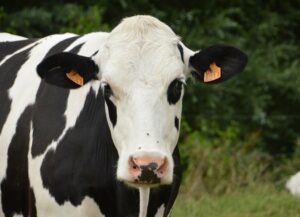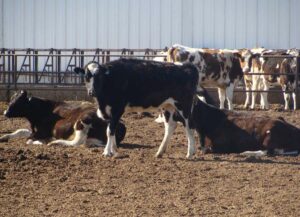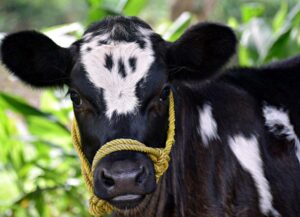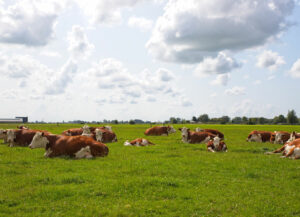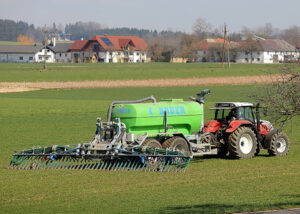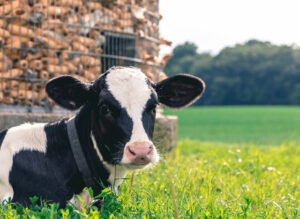Maria Villagrasa & Nuria Garcia
Foot and mouth disease (FMD), is a serious and highly contagious viral disease that affects livestock and has a significant economic impact; causes serious loss of production and, although most of the affected animals recover, they remain weak.
It is caused by a virus of the Picornaviridae family of which there are seven strains that are endemic in different countries of the world; each strain requires a specific vaccine. Infected animals exhale the virus that can infect other animals by air or oral route.
The disease can also be transmitted by people, vehicles and other contaminated objects. Mortality is generally low in adult animals (1-5%), but higher in calves (20% or more). The incubation period is 2 to 14 days.
The typical clinical sign is the appearance of blisters (or vesicles) on the nose, tongue or lips, inside the oral cavity, between the toes, above the hooves and udders. Other common symptoms include fever, hypersalivation, loss of appetite, weight loss and decreased milk production. Animals that have recovered from the infection can sometimes carry the virus and initiate new outbreaks of the disease.
Foot and mouth disease is endemic to several parts of Asia, most of Africa and the Middle East, as well as a few South American countries. Although all other countries are currently FMD-free, it is a cross-border disease that can occur sporadically in any area typically free.
Complete knowledge of relevant risk factors is key to implement an effective control strategy. A study (Chalutwan Sansamur, et al., 2020) was conducted to quantify risk factors associated with farm-level FMD outbreaks in Chiang Mai Province in Thailand.
A questionnaire was distributed among all farms registered in dairy cooperatives and/or Chiang Mai Provincial Livestock Office in all three study districts. Farms that had suffered from an outbreak of FMD (n = 140) and non-budding farms (n = 307) were visited by a veterinarian and an authorized livestock officer.
Farms with FMD outbreaks were defined as dairy farms where at least one animal with clinical signs typical of the disease was registered or where a tissue sample was confirmed as positive.
The questionnaire consisted of five parts that included:
- general information about the farmers;
- rearing and environment of the holding;
- movement of animals and vehicles before the outbreak;
- history of FMD infection and vaccination status
- biosecurity practices during outbreaks.
Logistic regression analyses were used to determine the association between potential risk factors and FMD outbreaks.
Cattle movement
Buying a cow on a farm without performing a quarantine protocol increased the risk of an FMD outbreak [probability index (odds ratio, OR) = 2.41]. In the study area, dairy cattle were commonly transported to farms without any pre-movement testing and were also not quarantined at the destination farm; therefore, the virus could be transmitted from newly purchased dairy cattle to susceptible livestock that were already on the farm.
Farms located near shared livestock grazing areas were associated with outbreaks of FMD [probability index (OR = 1.83), due to the aerial spread of the virus. In addition, farms located near a slaughter plant also had an increased risk of FMD (OR = 1.83). Surely sending infected cattle to a slaughter plant during an outbreak could have contributed to the spread of the virus during transport and at the plant.
Vaccination and control measures
While vaccination programs were implemented three times a year on all dairy farms, an increased risk for FMD was found in farms where vaccines were administered by dairy staff (OR = 2.52) compared to farms where the vaccine was administered by qualified personnel. Farm staff may not be able to administer vaccination properly.
Farms with a history of an FMD outbreak in the previous 12 months had a lower risk of experiencing a new outbreak (OR = 0.44). It is likely that the owners affected by an outbreak were more attentive to the prescribed preventive and control measures.
Administration staff educated these ranchers to improve biosecurity management practices, so they found that a high proportion of ranchers using disinfectants had experienced an outbreak of FMD on their farm in the previous 12 months.
Biosecurity needs to be strengthened and management practices improved
The risk factors identified in this study were related to farm biosecurity, FMD vaccine administration, and distance from farms to risk areas.
It is therefore important to strengthen biosecurity and improve farm management practices to reduce the incidence of the disease. Education or training programs are needed for farmers to improve knowledge and practices in relation to these factors.
Reference
Chalutwan Sansamur, Orapun Arjkumpa, Arisara Charoenpanyanet and Veerasak Punyapornwithaya. Determination of Risk Factors Associated with Foot and Mouth Disease Outbreaks in Dairy Farms in Chiang Mai Province, Northern Thailand. Animals 2020, 10, 512.
© 2020 Dairy Knowledge Center. All Rights Reserved.



